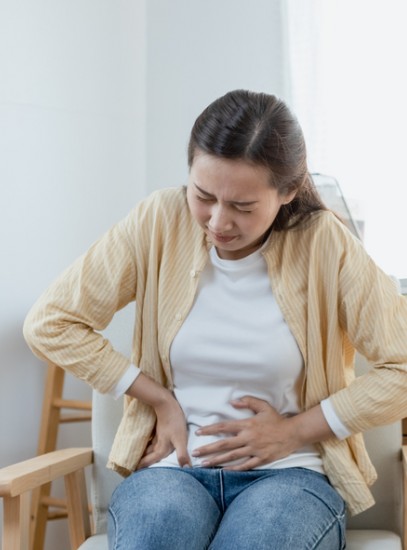Home / Diseases & Conditions / Endometriosis
Endometriosis
Endometriosis is a chronic condition where tissue similar to the lining of the uterus (endometrium) grows outside the uterus. This tissue can be found on the ovaries, Fallopian tubes, bowel, bladder, and other organs.

Endometriosis is not just “bad period pain” – it can cause a wide range of symptoms and significantly affect a person's quality of life.
It is estimated to affect around 1 in 10 people assigned female at birth, often during their reproductive years.
Diagnosis is often based on symptoms and may include:
Pelvic examination
Ultrasound or MRI scan
Diagnostic Laparoscopy (keyhole surgery): the only way to confirm the diagnosis. During this procedure, your gynaecologist will look for endometriosis tissue and may sometimes remove or treat it at the same time.

Symptoms of Endometriosis
Symptoms can vary and not everyone with endometriosis will have all of them.
Painful periods (dysmenorrhoea)
Pelvic pain at other times of the month
Pain during or after sex
Pain with bowel movements or urination, especially during periods
Heavy or irregular periods
Fatigue
Difficulty getting pregnant (infertility)
Some people may also experience bloating, nausea, or back pain.
Endometriosis Treatment
There is currently no cure for endometriosis, but treatments can manage symptoms, improve quality of life, and support fertility.
Treatment plans are individualised depending on your age, symptoms, desire for pregnancy, and other health factors.
There is no need to put up with pelvic pain. Your gynaecologist will make a thorough assessment and will work with you to find the treatment options that are right for you.
Medications
Hormonal treatments : help reduce or stop menstruation, which may ease symptoms
Pain relief : for managing day-to-day discomfort
Surgical Treatment
Laparoscopic excision surgery: to remove visible endometriosis tissue and potentially improve pain and fertility
More extensive surgery: for severe cases involving the bowel, bladder, or other organs
